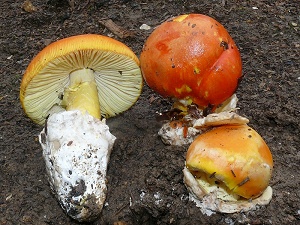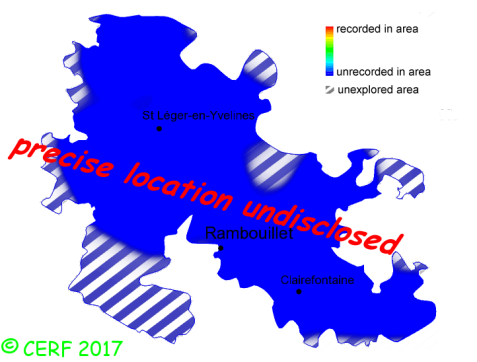| Amanita caesarea (Scop.:Fr.) Pers. |
|
|
|
|
|
|
The cap is orange-red to yellow; its margin is striate. The cap surface is smooth, not viscid nor sticky. The stem is full then hollow, bulbous, with a white sheathing volva, and a membranous striate ring. The flesh is unchanging; its taste is mild, pleasant, nutty; the odour is mild; its texture is fibrous. The gills are yellow, free, crowded . The spore print is yellowish to white. This species is mycorrhizal. It grows on the ground, in broad-leaved woods, in warm places, on a rather acid soil, with oak, chestnut, beech, pine, hazel. The fruiting period takes place from July to November.
Distinctive features : entirely orange, except for the volva which is white; stem with ring; likes hot places, very rare in northern countries Amanita caesarea is quite rare and confined in the forest of Rambouillet, and is quite rare, more generally speaking . | ||
|
page updated on 14/01/18

